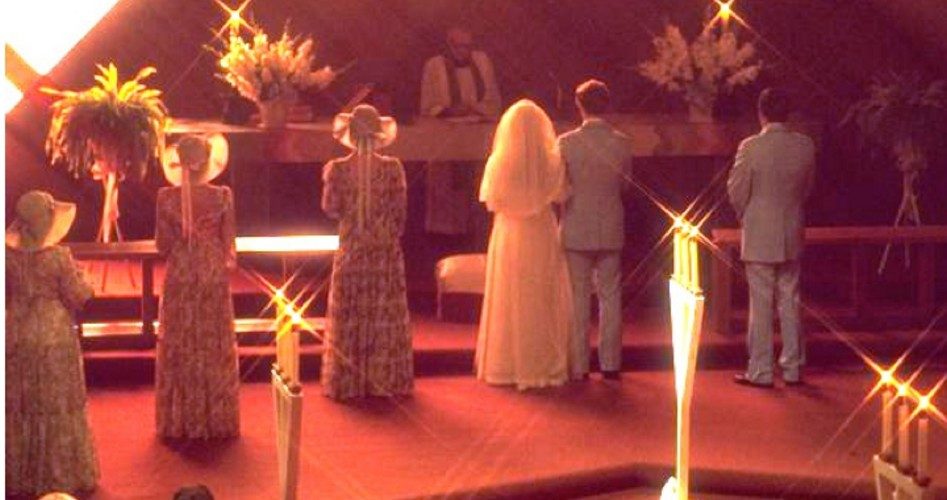
The number of Christians has declined precipitously in the United States during just the last seven years, while atheists have almost doubled their share of the population. So discovered the Pew Research Foundation via a massive study involving more than 35,000 Americans.
Those identifying as Christian lost almost eight points in population share between 2007 and 2014, declining from 78.4 percent to 70.6 percent. In contrast, the religiously “unaffiliated” now comprise almost a quarter of the U.S. population, with their share increasing 6.7 points from 16.1 percent to 22.8 percent. Within that group are atheists, whose population share rose from 1.6 to 3.1 percent; and agnostics, whose share grew from 2.4 to 4.0 percent.
Of course, the United States is still one of the world’s more “religious” countries. In Western Europe, for instance, more than 50 percent of respondents identify as “irreligious.” Sweden gets the Richard Dawkins Award there, with 76 percent of the population labeling themselves “not religious” or “atheist.” Not surprisingly, the most irreligious nation is once-Marxist, now-fascist China, where 90 percent thus identify. Other faithless notables are the Czech Republic, 75 percent; Hong Kong, 70 percent; the Netherlands and Britain, 66; Israel, 65; and Japan, 62. In fact, as Pew reported in 2012, “unaffiliated” is the third largest belief group worldwide, comprising 16 percent of our planet’s population (note: Many within this group do hold religious or spiritual beliefs).
Nonetheless, that Christians’ share of the U.S. population is dropping more than a point a year reaffirms that our country is undergoing the very same secularization plaguing Europe. Providing detail on this phenomenon, Pew writes:
The drop in the Christian share of the population has been driven mainly by declines among mainline Protestants and Catholics. Each of those large religious traditions has shrunk by approximately three percentage points since 2007. The evangelical Protestant share of the U.S. population also has dipped, but at a slower rate, falling by about one percentage point since 2007.… And the share of Americans who identify with non-Christian faiths also has inched up, rising 1.2 percentage points, from 4.7% in 2007 to 5.9% in 2014. Growth has been especially great among Muslims and Hindus, albeit from a very low base.
Not surprisingly, increased U.S. irreligiosity is largely driven by younger generations. As Pew also found:
While many U.S. religious groups are aging, the unaffiliated are comparatively young — and getting younger, on average, over time. As a rising cohort of highly unaffiliated Millennials reaches adulthood, the median age of unaffiliated adults has dropped to 36, down from 38 in 2007 and far lower than the general (adult) population’s median age of 46. By contrast, the median age of mainline Protestant adults in the new survey is 52 (up from 50 in 2007), and the median age of Catholic adults is 49 (up from 45 seven years earlier).
Digging into these numbers illuminates matters further. Among the group Pew labels the “Silent Generation,” born from 1928 through 1945, 85 percent identify as Christian; this drops to 78 percent among the Baby Boomers (born from 1946 through 1964). Subsequent generations trend likewise: Generation X (born ’65 through ’80), 70 percent; Older Millennials (’81 through ’89), 57 percent; and Younger Millennials (’90 through ’96), 56 percent.
While this phenomenon won’t surprise astute cultural observers, what may raise eyebrows is that it makes the United States an outlier, with a recent Gallup/WI survey finding that, worldwide, people younger than 34 tend to be more religious than their elders.
Other U.S. trends found by Pew are that the unaffiliated are more likely to be white than minority, men than women, in the West (where they outnumber every single religious group) than in other regions, and college-educated than not so, though the difference between the last two groups is extremely slight. Pew also reports that “nearly a quarter of those who were raised Christian no longer identify with Christianity.”
What does this portend for the future? While some assume the young will embrace faith later in life, this is unlikely. As Barna Group research company president David Kinnaman put it after conducting his own research on religiosity, “Much has been made about whether Millennials will get more serious about church and faith as they age, but the fact is younger Americans are not as connected as older generations are to Christ.” And this has serious political implications. As I wrote last year:
One of the best indicators of voting patterns is religious attendance. Upwards of 6 out of 10 voters who attend worship services more than weekly vote Republican; this ratio reverses itself for those who never attend, with more than 6 out of 10 voting Democrat. This reflects that commonly understood correlation between traditional American religiosity and conservative belief. Defining it even more precisely, the more passionately Christian people are, the more conservative they will generally be; just consider that almost 80 percent of born again/evangelical Christians voted for Mitt Romney in 2012 even though, as many analysts pointed out, some of them were leery of the candidate’s Mormonism.
A good example of this voting-pattern phenomenon is Sweden: This most atheistic Western nation is also probably the most left-wing.
In explaining America’s drift from Christian faith, many would point to anti-Christian messages in academia, entertainment, and the media. But a little-understood factor was related by the Barna Group via older research. As it reported in 2002, “By a 3-to-1 margin (64% vs. 22%) adults said truth is always relative to the person and their situation. The perspective was even more lopsided among teenagers, 83% of whom said moral truth depends on the circumstances, and only 6% of whom said moral truth is absolute.” Note that the latter figure among “born again” teens was only slightly higher: nine percent. The company also found that “the most common basis for moral decision-making was doing whatever feels right or comfortable in a situation.”
What Barna was examining is the characteristic philosophical defect of our time: moral relativism — which breeds emotion-based decision-making. And how does this undermine Christianity? As I explained last month:
The very basis of the faith is that Jesus died on the cross for man’s sins and thus redeemed us. But if everything is relative, there can be no sin — only perspective or preference.
And then there was no reason for Jesus to sacrifice himself in the first place.
Moreover, Christianity may teach that Jesus is the way, the life, and the Truth, but how likely are people to believe this if they don’t believe in Truth to begin with? In fact, why would they even search for Truth — a process otherwise known as philosophical pursuit — if they don’t believe it exists?
… And without a need to be redeemed from sin or a need of moral teaching (because there is no perceived morality), there’s no perceived need for Christianity. And people generally discard what they don’t need.
Besides, if emotion is the ultimate arbiter, Christianity and its limits on man’s appetites aren’t very appealing. One might rather be a hedonist.
And this helps explain our hedonistic times and why, whether it’s the ballot box or belief, our main guide isn’t principle, but pleasure and preference.


